#Eberhard Faber Pencils
Explore tagged Tumblr posts
Text
a guide to buying writing pencils as a gift
this is a guide to buying wooden writing pencils for someone in your life. why? just because! they're a nice little gift and way cheaper than most stuff you might be interested in buying. definitely cheaper than other fancy stationery like fountain pens. and they made John Steinbeck very excited...
Just the pure luxury of long beautiful pencils charges me with energy and invention.
- John Steinbeck
1. Vibe Management
Picture the recipient. Who are you buying these pencils for? Are we going for more of a classic Americana, 'analog living', rustic kind of vibe? Or is this person more of a stationery geek? Someone who's more artsy or more businesslike? We are focusing on writing pencils here but they have different qualities, hard and soft, subtle and dramatic, thick lacquer or thin paint. This is an analog object and the sensory qualities are important.



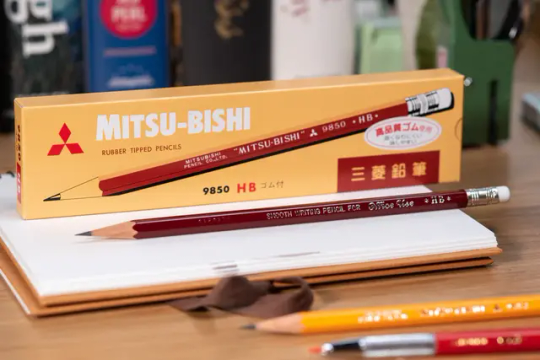
2. American or Japanese (or Other)
The two main countries you may be interested in are the USA and Japan. If you're an American looking to deliver some #2 nostalgia with the eraser on the end, or chasing the Steinbeck thing, you can't go wrong with an American manufacturer like Palomino (CA), Musgrave (Shelbyville, TN), or General's (Jersey City, NJ). But if your recipient is more into high-quality stationery goods of all kinds, they are probably already a fan of Japanese stationery, which is a much more discerning market than the USA when it comes to quality products. Manufacturers to check out here are Tombow and Mitsubishi Pencil (uni).
Bonus: Indian pencils. The pencil scene is big among Indian schoolgoers, and so they have a variety of different brands of pencil. The black and red Nataraj is the primary-school classic, but don't sleep on the internet fave Apsara. (Both are manufactured by the same company, Hindustan Pencils)



Ah, but aren't there different hardnesses of pencils? Nothing wrong with a classic HB/#2, but you'll find that many prefer a slightly softer and darker lead for writing - more like a B or 2B. The H end of the spectrum is harder and lighter leads more suitable for drafting than writing. An F is a nice middle ground (just a bit harder than HB). Japanese pencils also tend slightly softer and darker than American pencils of the same grade. Softer = smoother, harder = scratchier (generally speaking.
Personally I can't use leads softer than B because the dust triggers my asthma. Hadn't thought of that, huh?

3. Just Give Me the Recommendations Already!
The pencils everybody* has heard of:
Tombow Mono 100 and Mitsubishi Hi-Uni are historically the 'premium' Japanese pencils. Thick lacquer, carefully selected graphite. A single pencil will be in the $2.50-3.00 range, and a dozen will be $22-23. I recommend these in HB or (for Tombow) F.
In the Japanese 'good but not premium' category, I highly recommend the Tombow 2558 in HB, which has been called the greatest yellow pencil ever made, with one of the best erasers. The Mitsubishi 9850 is similarly a beautiful and high-quality pencil that isn't expensive. We're talking like $1.40 a pencil.
Going to American pencils, the Blackwing 602s are world-famous (among pencil people). People say the current Palomino-made ones are inferior to the Eberhard Faber ones that John Steinbeck used, but how would they know? I would stick with the 602's but go with the Naturals if you want more firm lead, or Pearls for softer lead (not for me). These will be $30 for a dozen - I guess you pay for the name, and you can't get them as singles, unless you happen to see one at your local stationery shop. But they are, indeed, very good.
Musgrave Tennessee Reds are one-of-a-kind, made from fragrant Tennessee red cedar, and with a smooth dark lead. Highly recommend, and only $14 for a dozen. But for a more affordable alternative, the Harvest 320s are $8.50 for a dozen and I think they're beautiful, with gold foil lettering and a crisp hexagonal body design with thin lacquer -rare among pencils nowadays.
There are also a bunch of specialized pencils for a variety of purposes - ones for test scoring, doing crosswords or marking up sheet music, songwriting... JetPens sells pencil samplers, while you can get variety packs from Musgrave and Blackwing. I wish I could recommend General's pencils but I haven't tried any that made an impression.




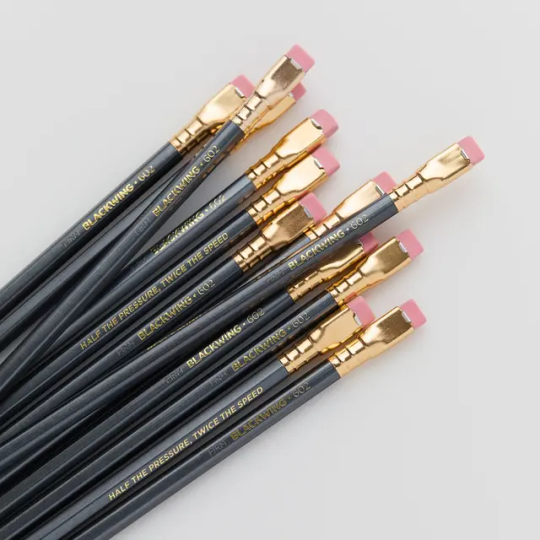

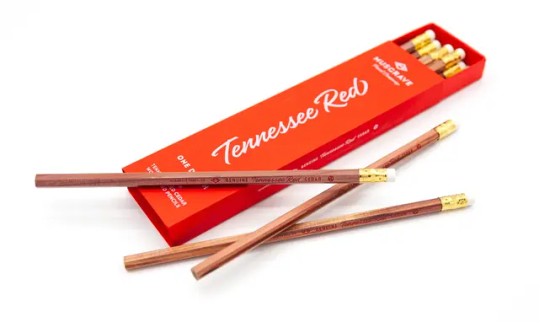

Here are the two pencil sharpeners I own and recommend:
Mitsubishi Uni KH-20 - a desktop crank sharpener that turns out a nice long point, $32
KUM No. 400-5L Stenographer's Long Point - like the name says, a tiny handheld sharpener with a long point, and dirt-cheap


For erasers, either use the one on the end of your pencil, or (since many fancy pencils don't come with erasers) take your pick. Most vinyl/plastic erasers are more than good enough, and easily better than a typical end-of-pencil eraser. Personally a simple Pentel Hi-Polymer has always served me well.
The only other accessory you might want is a pencil cap/point protector - an underrated way to keep your pencil sharp when you leave your pencil around or want to take it somewhere. EDC pencil? You better believe it! You might not give this as a gift, but I find it increases the 'usability' of a pencil in day-to-day. I like this Kutsuwa aluminum one.


Since we're gift-giving, you may be interested to know what some nice gift boxes might look like:
Musgrave has several fun variety packs, including one that looks like a pencil. They also have a $75 box made of fragrant Tennessee red cedar for their red cedar pencils, if you're like... rich. And have exquisite taste in woods.



Meanwhile, Blackwing likes to do the limited edition thing, and has "volumes" honoring this or that famous person. These are just their standard leads with fancy art on the pencil lacquer, don't buy the hype. (Unless you want to, I mean. I have a pentagonal Blackwing Vol. 10001 that I bought as a loosey at a local stationery shop and I really enjoy it.) Even if you just buy a normal pack of 602's, they are 'fancy' enough that your recipient should appreciate it, if they are the type of person you would buy pencils in the first place.
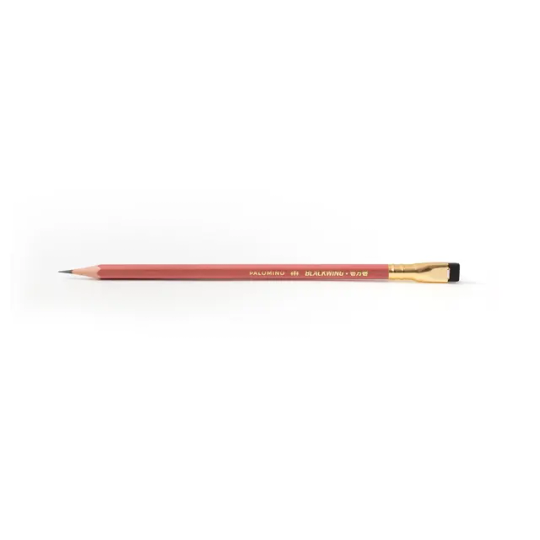
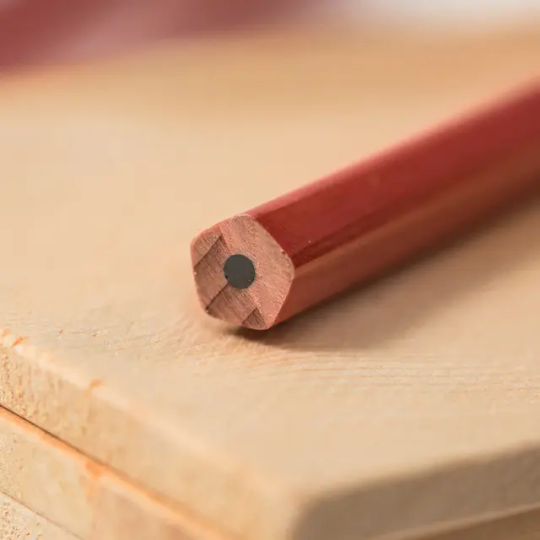


"but tumblr user stylo-90, how do I choose?"
whichever one looks prettiest to you! don't think too hard about it. (i understand the irony of saying this now)
51 notes
·
View notes
Text
Eberhard Faber was best known for their pencils (such as the original Blackwing) but for awhile they also made fountain pens.


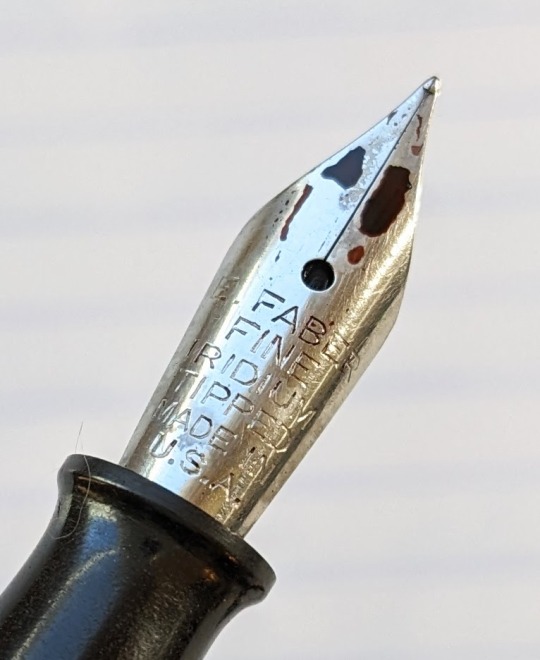
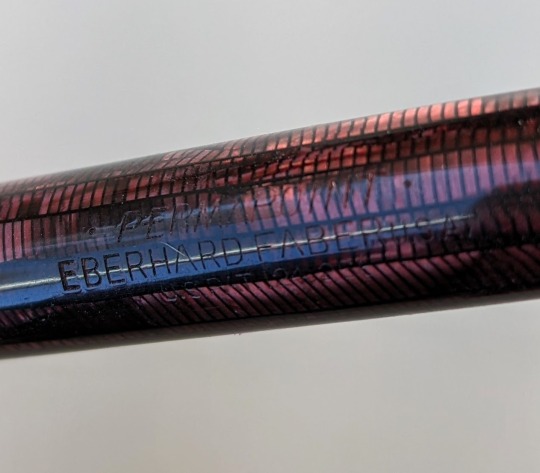
The celluloid pattern on this pen is a variant of "snakeskin". The nib is steel and has pencil-like feedback. I've read that Permapoint nibs were replaceable like Esterbrook Re-New-Points, but this one apparently predates that feature.
I looked up the patent number on the pen and got this:
If you, like me, were wondering whether there was a connection between Eberhard Faber (American) and Graf von Faber-Castell (German), the answer is: not originally! But GvFC bought the brand a few years back. So it seemed natural to load a GvFC ink in this pen.
9 notes
·
View notes
Text




Picture 1, top left: Yikes pencils from Nickelodeon - I can't remember if I intentionally snapped these in half but I really enjoyed using them when they were shorter. The erasers weren't great and smeared like most built-in erasers. The lead is kind of soft and unless freshly sharpened it wasn't easy to get crisp lines with them, but they were lovely. I'm so glad I have so many remains left. I also have some of the original packaging, as the inserts made perfect bookmarks.
Picture 2, top right: I love my vintage Lisa Frank pencils from 1989. They were hand-me-downs, as I was three at the time. I haven't used them after a certain point because I wanted to preserve the designs. My favorite was definitely the rainbow leopard pattern.
Picture 3, bottom left: My favorite short pencils are my "Raw" and "shaved" pencils from the 90s. When I went to Catholic elementary school for three years, we use to "shave" our pencils (usually at my instigation) on the side of our desks because the curved metal frame was perfect to neatly remove all the paint from virtually any pencil. The custodial staff must have hated us (sorry Ed, wherever you are!). Towards the end of the 90s they did actually manufacture "naturals" and "raw" pencils, mainly Eberhard Faber American Naturals Pencils. In my photo, the pencils on the outside are the ones that I shaved and all the rest are manufactured without a paint coating.
Picture 4, bottom right: Misc pencils - Not sure where I got all of these. The third one from the left is one that my dad used. He used to get them free from lumber yards and companies like that. The unique green and brown giraffe pattern doesn't have a brand name printed on it so I don't know where it's from, most likely another hand-me-down or stocking stuffer. Same goes for the orange circle pattern. The Marvin the Martian pencil was from a Looney Toons set circa 1994. While I'm not much of a Looney Toons fan, these pencils had the best lead and were a real joy to draw with.
I have such fond memories of all these pencils that were in almost every purse and backpack I ever had from my elementary school years to my teens.
7 notes
·
View notes
Text

1957 Eberhard Faber Colorbrite Pencils
#1957#colorbrite#pencil#business#writing#pencils#vintageadsmakemehappy#vintage magazine#vintage advertising#magazine#advertising#1950s#50s
40 notes
·
View notes
Text




Figuring out some costume designs for an OC.
7/26/2023. Sketched in Platinum Preppy fountain pen, using Noodler's Ink and Pilot Petit fountain pen, using Monteverde "Charoite" ink. Colored with Crayola Super Tips markers, Koh-i-noor Woodless Colour Pencils, and Eberhard Faber Col-erase colored pencils. Referencing Figma Archetype She for all besides 1st sketch, posted last here.
3 notes
·
View notes
Text
By Bill McKibben
Of all the astonishing facts about our blithe remaking of the world’s climate system, the most astonishing might be this: if oceans didn’t cover seventy per cent of our planet, we would have increased the average temperature to about a hundred and twenty-two degrees Fahrenheit. That’s because those oceans have absorbed something like ninety-three per cent of the extra heat trapped by the greenhouse effect and our burning of fossil fuels. In the past hundred and fifty years, we’ve made the ocean soak up, on average, the heat equivalent of a Hiroshima-size nuclear bomb every second and a half; in recent years, that’s increased to five or six Hiroshimas a second.
But it’s not like that heat just gets locked away in saltwater storage. The energy in that heat manifests itself in many ways. It melts ice, for instance. It kills coral—experts have suggested that coral may be safer in tanks on land than in the Gulf of Mexico this summer. And it raises the sea level—at the moment, more than a third of sea-level rise is simply due to the fact that seawater expands when it warms. In midsummer, forty-four per cent of the world’s oceans were in a “marine heat wave.” That heat powered Hurricane Idalia until it crashed into Florida’s Apalachee Bay, a stretch of land that hasn’t been bashed by a major hurricane since recordkeeping began in 1851. Idalia was a tropical storm roughly twenty-four hours earlier, when it passed over Cuba. But the waters of the Gulf of Mexico are incredibly hot. In recent years, we’ve become used to these elevated readings and begun referring to the Gulf as a bathtub; earlier this summer, a buoy in murky, shallow seawater near the Keys registered a temperature above a hundred and one degrees Fahrenheit, a potential new world record. That’s hot-tub hot. Hotter than your blood. You can’t sit in it for too long.
Across the Gulf, water temperatures are averaging two degrees Fahrenheit above normal. And those high temperatures currently extend a hundred feet or more below the surface; this overheated water is the fuel that allows for what hurricane watchers call “rapid intensification,” the almost unbelievable acceleration of whirling winds. In a matter of twelve hours, Idalia passed through Categories 1, 2, and 3 on the Saffir-Simpson Scale, topping out as a Category 4 storm, before it made landfall as a Category 3. (Had it had more time over the open water of the Gulf, it likely would have kept strengthening; a natural cycling process, known as “eyewall replacement,” dropped its winds a notch just before landfall.) As its gales grew fiercer and spread out, it whipped up a ferocious storm surge along this magnificent coast.
And it is indeed magnificent. Cedar Key, an island community just off the coast, is where the most famous TV hurricane guy, Jim Cantore, of the Weather Channel, holed up to broadcast, wading through the storm surge with typical bravado. Normally, it’s a lovely, sleepy little town—the old Florida, far removed from, say, Daytona Beach or Disney’s Orlando. History knows it for two things. One: in 1855, a man named Eberhard Faber bought up many of its cedar forests, and if you recognize that name it’s because he used the wood to produce a great many of the planet’s pencils. Two: in 1867, a not-yet-famous John Muir arrived in Cedar Key toward the end of his “thousand-mile walk to the Gulf,” which had begun in Louisville seven weeks earlier.
Muir, as he walked, was mulling over a series of ideas that became the basis for an important strain of environmentalism, and his thinking reached a literal fever pitch in Cedar Key, where he came down with a bad case of malaria. Raised by a strict Presbyterian father who had forced him to memorize the Bible on pain of whipping, he was well versed in the idea that the world had been made for man. In his now classic text, “A Thousand-Mile Walk to the Gulf,” Muir wrote about this “pleasant plan,” in which “whales are storehouses of oil for us,” hemp was to be used in ships’ rigging, and iron was “made for hammers and ploughs.”
But in the aftermath of his illness, he began to question whether the world had been made for man alone:
During my long sojourn here as a convalescent I used to lie on my back for whole days beneath the ample arms of these great trees, listening to the winds and the birds. There is an extensive shallow on the coast, close by, which the receding tide exposes daily. This is the feeding-ground of thousands of waders of all sizes, plumage, and language, and they make a lively picture and noise when they gather at the great family board to eat their daily bread, so bountifully provided for them.
As he reflected, too, on the voracious gators and spiny plants that he’d encountered as he traversed a very wild Florida, his thinking grew ever more radical, postulating what might be the first modern biocentrism:
Now, it never seems to occur to these far-seeing teachers that Nature’s object in making animals and plants might possibly be first of all the happiness of each one of them, not the creation of all for the happiness of one. Why should man value himself as more than a small part of the one great unit of creation? And what creature of all that the Lord has taken the pains to make is not essential to the completeness of that unit—the cosmos? The universe would be incomplete without man; but it would also be incomplete without the smallest transmicroscopic creature that dwells beyond our conceitful eyes and knowledge.
For Muir, that world view was tonic. He eventually shipped out of Cedar Key on a journey that would take him to Yosemite and to the founding of the Sierra Club, our first great environmental group. Muir was an imperfect man, and his own organization eventually criticized him for holding racist views. But in moments of environmental despair, we, too, might find solace in the idea that
Our own good earth made many a successful journey around the heavens ere man was made, and whole kingdoms of creatures enjoyed existence and returned to dust ere man appeared to claim them. After human beings have also played their part in Creation’s plan, they too may disappear without any general burning or extraordinary commotion whatever.
Of course, “general burning” turns out to be precisely what we’ve done. By digging up millions of years of biology and setting it on fire, in the course of a century or two, we’ve managed to overwhelm the world that Muir saw. We’ve poured heat into the air and especially into the oceans, and now that heat is beginning to dominate life on our planet. We can still back off some: every pipeline we shut down and every solar panel we install contributes to fewer Hiroshima bombs exploding in the seas. But as Florida found out again on Wednesday morning, and the world rediscovered this brutally hot summer, we’ve already shifted our earth in the most fundamental fashion.
0 notes
Text
By Bill McKibben
Of all the astonishing facts about our blithe remaking of the world’s climate system, the most astonishing might be this: if oceans didn’t cover seventy per cent of our planet, we would have increased the average temperature to about a hundred and twenty-two degrees Fahrenheit. That’s because those oceans have absorbed something like ninety-three per cent of the extra heat trapped by the greenhouse effect and our burning of fossil fuels. In the past hundred and fifty years, we’ve made the ocean soak up, on average, the heat equivalent of a Hiroshima-size nuclear bomb every second and a half; in recent years, that’s increased to five or six Hiroshimas a second.
But it’s not like that heat just gets locked away in saltwater storage. The energy in that heat manifests itself in many ways. It melts ice, for instance. It kills coral—experts have suggested that coral may be safer in tanks on land than in the Gulf of Mexico this summer. And it raises the sea level—at the moment, more than a third of sea-level rise is simply due to the fact that seawater expands when it warms. In midsummer, forty-four per cent of the world’s oceans were in a “marine heat wave.” That heat powered Hurricane Idalia until it crashed into Florida’s Apalachee Bay, a stretch of land that hasn’t been bashed by a major hurricane since recordkeeping began in 1851. Idalia was a tropical storm roughly twenty-four hours earlier, when it passed over Cuba. But the waters of the Gulf of Mexico are incredibly hot. In recent years, we’ve become used to these elevated readings and begun referring to the Gulf as a bathtub; earlier this summer, a buoy in murky, shallow seawater near the Keys registered a temperature above a hundred and one degrees Fahrenheit, a potential new world record. That’s hot-tub hot. Hotter than your blood. You can’t sit in it for too long.
Across the Gulf, water temperatures are averaging two degrees Fahrenheit above normal. And those high temperatures currently extend a hundred feet or more below the surface; this overheated water is the fuel that allows for what hurricane watchers call “rapid intensification,” the almost unbelievable acceleration of whirling winds. In a matter of twelve hours, Idalia passed through Categories 1, 2, and 3 on the Saffir-Simpson Scale, topping out as a Category 4 storm, before it made landfall as a Category 3. (Had it had more time over the open water of the Gulf, it likely would have kept strengthening; a natural cycling process, known as “eyewall replacement,” dropped its winds a notch just before landfall.) As its gales grew fiercer and spread out, it whipped up a ferocious storm surge along this magnificent coast.
And it is indeed magnificent. Cedar Key, an island community just off the coast, is where the most famous TV hurricane guy, Jim Cantore, of the Weather Channel, holed up to broadcast, wading through the storm surge with typical bravado. Normally, it’s a lovely, sleepy little town—the old Florida, far removed from, say, Daytona Beach or Disney’s Orlando. History knows it for two things. One: in 1855, a man named Eberhard Faber bought up many of its cedar forests, and if you recognize that name it’s because he used the wood to produce a great many of the planet’s pencils. Two: in 1867, a not-yet-famous John Muir arrived in Cedar Key toward the end of his “thousand-mile walk to the Gulf,” which had begun in Louisville seven weeks earlier.
Muir, as he walked, was mulling over a series of ideas that became the basis for an important strain of environmentalism, and his thinking reached a literal fever pitch in Cedar Key, where he came down with a bad case of malaria. Raised by a strict Presbyterian father who had forced him to memorize the Bible on pain of whipping, he was well versed in the idea that the world had been made for man. In his now classic text, “A Thousand-Mile Walk to the Gulf,” Muir wrote about this “pleasant plan,” in which “whales are storehouses of oil for us,” hemp was to be used in ships’ rigging, and iron was “made for hammers and ploughs.”
But in the aftermath of his illness, he began to question whether the world had been made for man alone:
During my long sojourn here as a convalescent I used to lie on my back for whole days beneath the ample arms of these great trees, listening to the winds and the birds. There is an extensive shallow on the coast, close by, which the receding tide exposes daily. This is the feeding-ground of thousands of waders of all sizes, plumage, and language, and they make a lively picture and noise when they gather at the great family board to eat their daily bread, so bountifully provided for them.
As he reflected, too, on the voracious gators and spiny plants that he’d encountered as he traversed a very wild Florida, his thinking grew ever more radical, postulating what might be the first modern biocentrism:
Now, it never seems to occur to these far-seeing teachers that Nature’s object in making animals and plants might possibly be first of all the happiness of each one of them, not the creation of all for the happiness of one. Why should man value himself as more than a small part of the one great unit of creation? And what creature of all that the Lord has taken the pains to make is not essential to the completeness of that unit—the cosmos? The universe would be incomplete without man; but it would also be incomplete without the smallest transmicroscopic creature that dwells beyond our conceitful eyes and knowledge.
For Muir, that world view was tonic. He eventually shipped out of Cedar Key on a journey that would take him to Yosemite and to the founding of the Sierra Club, our first great environmental group. Muir was an imperfect man, and his own organization eventually criticized him for holding racist views. But in moments of environmental despair, we, too, might find solace in the idea that
Our own good earth made many a successful journey around the heavens ere man was made, and whole kingdoms of creatures enjoyed existence and returned to dust ere man appeared to claim them. After human beings have also played their part in Creation’s plan, they too may disappear without any general burning or extraordinary commotion whatever.
Of course, “general burning” turns out to be precisely what we’ve done. By digging up millions of years of biology and setting it on fire, in the course of a century or two, we’ve managed to overwhelm the world that Muir saw. We’ve poured heat into the air and especially into the oceans, and now that heat is beginning to dominate life on our planet. We can still back off some: every pipeline we shut down and every solar panel we install contributes to fewer Hiroshima bombs exploding in the seas. But as Florida found out again on Wednesday morning, and the world rediscovered this brutally hot summer, we’ve already shifted our earth in the most fundamental fashion.
0 notes
Text
Vintage Eberhard Faber NOBLOT 705 Ink Pencils One Dozen Original Box WWII Era
COLLECTIBLES: Seller: skipthemall (100.0% positive feedback) Location: US Condition: Used Price: 179.99 USD Shipping cost: Free Buy It Now https://www.ebay.com/itm/256027724505?hash=item3b9c710ad9%3Ag%3AY3wAAOSwbBNkJje-&amdata=enc%3AAQAHAAAA0BwWL2Ova8CpKy6EWhT%2BLzV8ZYCdYnvj78JVVu%2FwFqwZ7fZX7ojrtTUucAMSy9%2BWatdeEgVINGk8xfwBL6%2FyX%2FG1qnLNIY8SGbllDrJbCiN1FbZ%2FA%2BqArT0D7un9rqsdTP%2FilkoF%2BMkTmYNj0WYlXYovvjHijKA5RjQfBNuPZKQoVLzWAb%2Fv6NovrmungNo0xw21rDKIOOre6HkceRVsePT22%2BNZFN0pSamxR5g30M2UWF32jfNpHlR6CqHHGlxPYwS7S2tWxuQBRK7nyQeLCTA%3D&mkevt=1&mkcid=1&mkrid=711-53200-19255-0&campid=5338779482&customid=&toolid=10049&utm_source=dlvr.it&utm_medium=tumblr
0 notes
Photo










Source: http://twitter.com/6sqft/status/981947075876143105
Want to know what iconic objects were made in Brooklyn? @JamesandKarla and @brooklynhistory have got you covered https://t.co/7NSJy3ZelW pic.twitter.com/KduQUOqEti
— 6sqft (@6sqft) April 5, 2018
#@6sqft#Brooklyn#@brooklynhistory#@JamesandKarla#Eberhard Faber Pencils#Cracker Jack#Beer#Schaefer#Rheingold#Knickerbocker#U-Bet Chocolate Syrup#U-Bet#Gage & Tollner Restaurant#Brillo#Virginia Dare Extracts#Domino Sugar#Sahadi’s#E.R. Squibb & Sons Pharmaceuticals#squibb
2 notes
·
View notes
Photo

The new service is a chart that tells you to buy more pencils.
National Geographic Magazine 1935
#vintage ad#vintage ads#advertising#advertisment#pencil#office supplies#eberhard faber#1930s#1930 ad#1930's#1930's ad#1935#funny#humor#humour
5 notes
·
View notes
Photo






#Stationery Saturday: Pencils
Perhaps there are still some students who use wooden pencils out there. In the archives, we are happy to loan out our supply of wooden pencils to researchers in need. The stationery above is from the Dexter-Roundy family papers, 1772-1951. They are all notes of sympathy on the death of Edward McBeth Dexter in 1920.
We direct you to www.pencilpages.com for all your pencil history needs. Here is some information from that website on the above companies.
The American Lead Pencil Company: We were curious why they had the “Venus de Milo” sculpture on their letterhead. They used “Venus” as a trade name and changed their company name to Venus Pen & Pencil Corp in 1956. In 1973 They were acquired by Faber Castell.
Eagle Pencil Company: They operated in several counties including England, their letterhead states they have their European Office and Branch factory in Tottenham, London, N. England. In 1969 they were part of the Berol company along with Venus-Easterbrook and several others.
Eberhard Faber: The Eberhard Faber Pencil Company began manufacturing pencils in New York City in 1849. When this note of sympathy was signed, it was Eberhard Faber II and his brother Lothar who were managing the company. The company is now part of Faber-Castell. (information from the finding aid for the Eberhard Faber Pencil Company Collection at the Brooklyn Historical Society)
If you’d like to see items from the Dexter-Roundy family papers just ask the staff of the UWM Archives. For the items above ask for Box 1 folder 6.
See our other Stationery Saturday posts
#uwm archives#stationery saturday#pencils#pencil company#american lead pencil company#eagle pencil company#eberhard faber#venus#venus de milo#eagle#pencil#stationery#Letterhead#1920s#sympathy#Dexter-Roundy Family Papers#Edward M Dexter#archives#correspondence#letters#typed#Alison
18 notes
·
View notes
Photo

Calls the Signals in American Business...
COLORBRITE Pencils, 1957
#1957#'57#'50s#50s#fifties#1950s#vintage ads#50s ads#fifties ads#colorbrite pencils#eberhard faber#50s hair
24 notes
·
View notes
Text

Today's Secretary October 1956. Eberhard Faber Office Pencil Ad.
28 notes
·
View notes
Photo
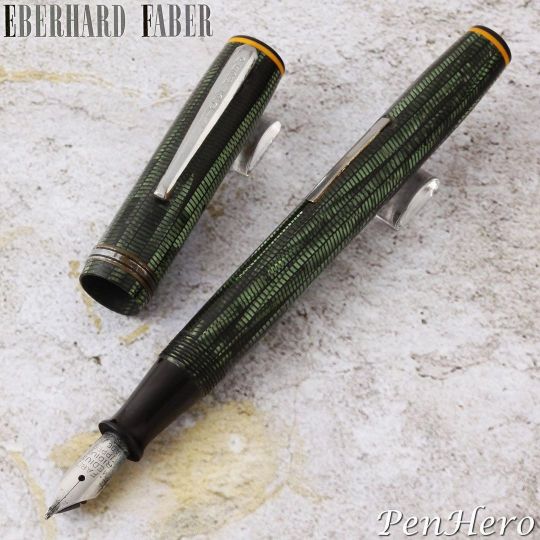
This is an Eberhard Faber Permapoint Yellow Band fountain pen in green brickwork or snakeskin celluloid c. 1943-1948. It’s a 5 1/16 inch long pen lever fill pen with chrome or rhodium plated trim. Eberhard Faber, named after John Eberhard Faber, was much more widely known as a pencil manufacturer, established in Manhattan, New York City in 1861 and moved to Brooklyn in 1872 after a fire. It appears from advertising that the company made fountain pens from the late 1930s to the mid 1950s. The clip is stamped PERMAPOINT. The stainless steel nib is stamped E. FABER over MEDIUM over IRIDIUM over TIPPED over MADE IN over U. S. A. and was originally gold plated. The barrel is stamped PERMAPOINT over EBERHARD FABER U. S. A. over U. S. PAT. 124,266. The patent is for the “ornamental” Yellow Band on the cap and barrel end. These pens were made in solid black and green, red and brown “pearl” brickwork celluloid. Gold plated trim models were also made. Nibs available were fine, medium and broad. Matching pencils and pen and pencil sets were offered. #pencollecting #fountainpen #eberhardfaber #permapoint #snakeskin #brickwork #celluloid #penhero https://www.instagram.com/p/CLVB_ljDQgU/?igshid=pcrp2ejne80h
4 notes
·
View notes






